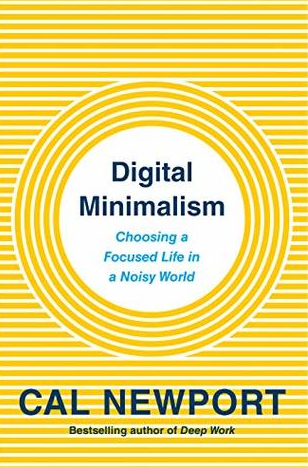Why it works
Principle #1: Clutter is costly.
Cluttering your attention and time with too many devices, apps, and services creates an overall negative cost that swamps the small benefits that each individual item provides in isolation.
Principle #2: Optimization is important.
Make sure the technology supports something you value and think about carefully how best to use the technology to extract its full potential benefit.
Principle #3: Intentionality is satisfying.
Digital minimalists derive significant satisfaction from their general commitment to being more intentional about how they engage with new technologies.
How much of your time and attention, must be sacrificed to earn the small profit of occasional connections and new ideas by spending time on Twitter? If Twitter consumes ten hours per week this cost might be too high for the limited benefits. If you value new connections and exposure to interesting ideas, why not adopt a habit of attending an interesting talk or event every month, and force yourself to chat with at least three people while there? This could produce similar types of value but consume only a few hours of your life per month, leaving you with an extra thirty-seven hours to dedicate to other meaningful pursuits.
The Digital Declutter Process
Put aside a thirty-day period during which you will take a break from optional technologies in your life.
Netflix and various non-essential apps such as Facebook would be included however texting to arrange to collect your child from football isn’t. You are not trying to do this as a detoxicifciation more a new lifestyle.
During this thirty-day break, explore and rediscover activities and behaviours that you find satisfying and meaningful.
The goal of a digital declutter, is not simply to enjoy time away from intrusive technology. During this month long process, you must aggressively explore higher-quality activities to fill in the time left vacant by the optional technologies you’re avoiding.
Much like decluttering your house, this lifestyle experiment provides a reset for your digital life by clearing away distracting tools and compulsive habits that may have accumulated haphazardly over time and replacing them with a much more intentional set of behaviours, optimized, in proper minimalist fashion, to support your values instead of subverting them.
This might feels as if a psychological weight you didn’t realize had been dragging them down. Look at optional technologies and don’t think is a detox more new lifestyle.
At the end of the break, reintroduce optional technologies into your life, starting from a blank slate. It might be that you then spend one hour on Facebook once a week at weekends, rather than every day and keep the app off your phone. If you are using apps by habit and not gaining from them consider deleting them.
To allow an optional technology back into your life at the end of the digital declutter, it must:
Serve something you deeply value, not just offer some benefit.
Be the best way to use technology to serve this value, if it’s not, replace it with something better.
Have a role in your life that is constrained with a standard operating procedure that specifies when and how you use it.
So why bother? You might get more free time but also free up your mind which can be beneficial. It might be that we are in fact addicted to our smart phones. Addiction is after all a condition in which we have a persistent and intense urge use of a substance or in a behaviour to engage in certain behaviours, often usage of a drug, despite substantial harm and other negative consequences.
Solitude is of value; this is a subjective state in which your mind is free from input from other minds. Solitude deprivation occurs when we use our smart phones too much, this doesn’t allow our brains to switch off.
The brain uses similar areas when doing nothing and when we are communicating. It is argued that
“we are interested in the social world because we are built to turn on the default network during our free time.”
The technology companies want your attention – do you want to resist this with a digital minimalism movement? An attention resistance movement, made up of individuals who combine high-tech tools with disciplined operating procedures. The aim is to drop in to extract value, and then slip away before the attention traps set by these companies can spring shut.



